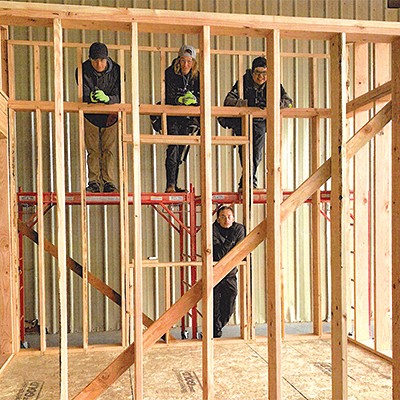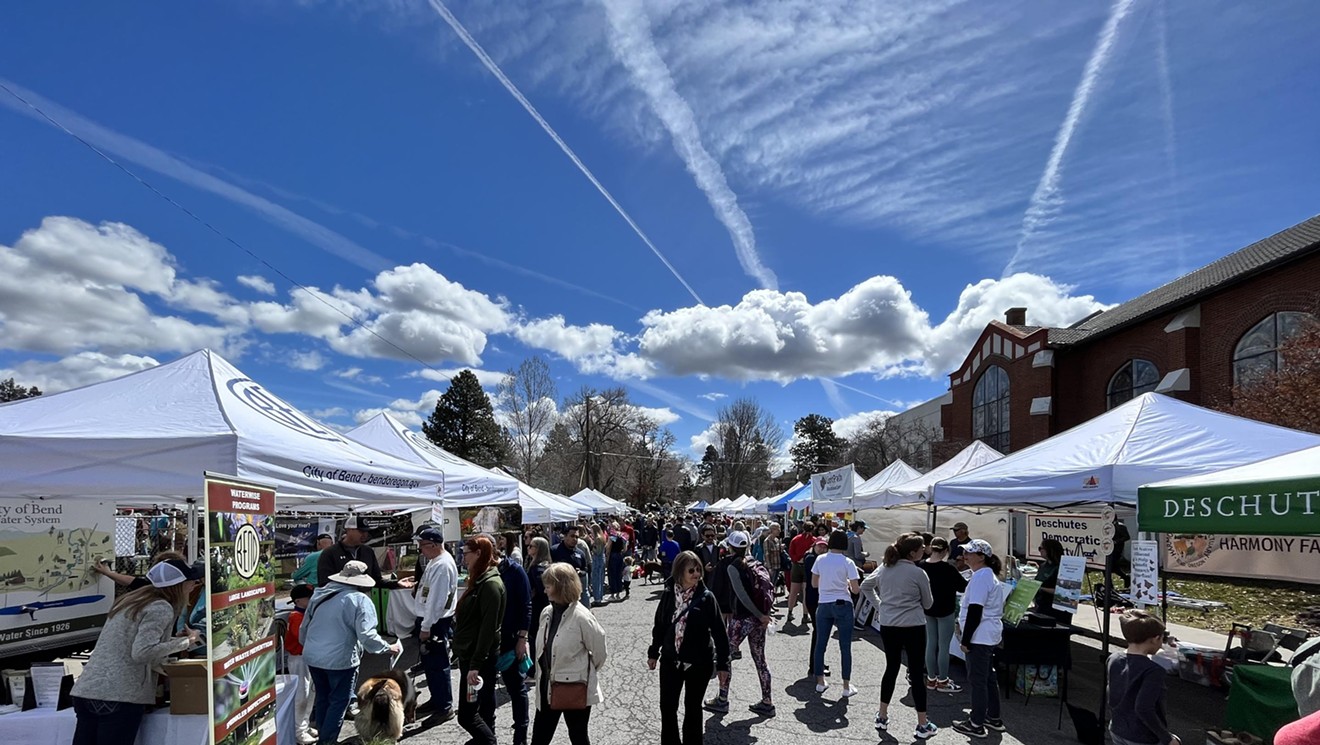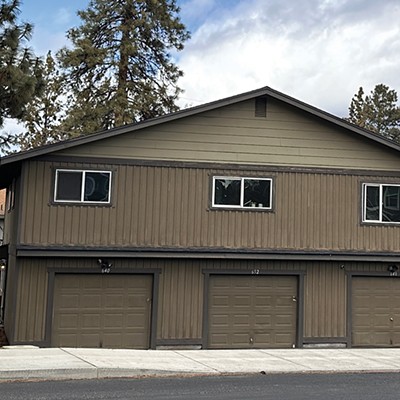By noon last Wednesday, the Les Schwab station on Franklin already had four customers who had blown out tires at the roundabout at Galverston and NW 14th where gapping potholes were hammering tires—potholes, ironically, caused by the roads being chewed up by the very studded tires meant to keep drivers safe. And that is just one tire station of many, and one pothole of way too many in Bend.
But no, the Boot is not to the potholes marring the streets in Bend, and it certainly is not to the city employees we have seen with the Sisyphean task trying to fill those holes. And no, don't get your Libertarian panties in a wad; we're not advocating banning studded tires (although ten states, including Minnesota and Wisconsin, do and, really, how is your all-wheel drive Subaru not able to handle the roads when ours seem to do just fine coming and going from the mountain?)
This Boot is to the State Legislature for failing to tax studded tires. It is truly mind-boggling is that the state legislature chronically has failed to present any sustainable and reasonable solution to the giant financial drain that studded tires cause—both on individuals needing to replace popped tires, as well as the larger cost to municipalities in road repair.
Oh, you don't think it is a big problem?
In a comprehensive study conducted by the Oregon Department of Transportation, it was estimated that studded tires cause as much as $42 million in damages each year, straining an already stretched thin budget. The problems that studded tires were causing was identified as a major financial liability as early as 1994, yet over the past two decades the state has failed to put forward a single solution to patch this unnecessary leak in the state's budget.
A tax on users (oh, jeez, teabag it elsewhere; hear us out) would be reasonable and responsible. Just like second-hand smoke should not be allowed to cause non-users hazards or expenses, the idea of internalizing costs to detrimental behavior is simply, well responsible; that is, studded tire users should pay for the use—and damage—they cause.
With a reported 1.2 million studded tires in use each winter, even a minor tax, say $25 per winter per tire, would greatly offset the financial damage—and would place the financial responsibility more squarely on the persons creating those costs. It is called internalizing costs, and is the same idea behind taxing liquor and smokes to bring revenue to health funds.
That proposal has routinely been presented to the Oregon State Legislature—and just as regularly squashed. Oh, no, there is no dispute that the tires cause damage.
But what there is are lobbyists from Les Schwab.
In the last legislative session, three different bills were presented, including two modest suggestions from the well-respected State Representative Mitch Greenlick. As presented to the House Transportation Committee, one of the bills recommended a $10 charge at the point of sale.
But the idea gained little traction. Many speculate because Les Schwab lobbyists derailed it, and the bill was detoured into a new study from ODOT. With this new study, ODOT says its plans to find out how many Oregon drivers use studded tires, and to really pin down the precise cost
But really, whether it is $10 million or $50 million that studded tires are causing, isn't the point the same—each winter, studded tires cause millions of dollars of damage, a cost spread out to taxpayers, the vast majority who do not use studded tires. And, each winter that ODOT and state legislators stall in finding a remedy digs the financial ruts even deeper.
























